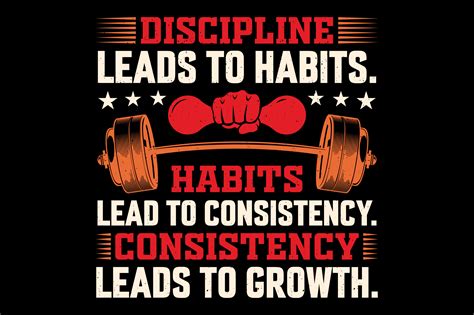Embracing the Power of a Growth Mindset
For many men, the journey through life is marked by two persistent challenges: the looming specter of financial fears and the frustrating wall of fitness plateaus. Both can feel insurmountable, leading to anxiety, demotivation, and a sense of being stuck. However, what if the key to unlocking progress in both these crucial areas lies not in brute force or luck, but in a fundamental shift in perspective? This is where the concept of a growth mindset comes into play – a powerful psychological framework that can transform obstacles into stepping stones.

Understanding the Growth Mindset
Coined by Dr. Carol Dweck, a growth mindset is the belief that your abilities and intelligence are not fixed traits, but can be developed through dedication and hard work. It stands in stark contrast to a fixed mindset, which assumes that talent and intelligence are static and unchangeable. When applied to financial struggles or fitness roadblocks, a growth mindset empowers men to view challenges as opportunities for learning and growth, rather than as definitive limits to their potential.
Instead of thinking, “I’m just not good with money,” a growth mindset encourages, “I can learn strategies to manage my finances better.” Similarly, faced with a fitness plateau, the thought shifts from, “I’ve hit my genetic limit,” to “What new training methods or nutritional adjustments can I explore to push past this?”
Conquering Financial Fears with a Growth Mindset
Reframing Failure and Embracing Learning
Financial fears often stem from past mistakes or a lack of understanding. A fixed mindset might interpret a bad investment or a period of debt as proof of inherent financial incompetence. A growth mindset, however, sees these as valuable lessons. It encourages men to analyze what went wrong, seek knowledge, and apply new strategies. This perspective fosters resilience, allowing for calculated risks and a willingness to step outside one’s comfort zone in financial planning.
- Educate Yourself: View financial literacy as a skill to be developed, not an innate talent. Read books, take courses, or seek advice from experts.
- Embrace Patience: Understand that wealth building is a marathon, not a sprint. Small, consistent efforts compound over time.
- See Challenges as Opportunities: A market downturn isn’t just a loss; it could be an opportunity for strategic rebalancing or buying at lower prices.

Shifting from Scarcity to Abundance
Financial fears often come from a scarcity mentality – the belief that resources are limited. A growth mindset helps shift this by focusing on value creation and the potential for new income streams or smart investments. It’s about believing in your ability to generate wealth and manage it effectively, rather than constantly worrying about losing what you have.
Breaking Fitness Plateaus with a Growth Mindset
Viewing Plateaus as Signals for Change
Every man serious about fitness eventually encounters a plateau where progress stalls despite consistent effort. A fixed mindset can lead to frustration, giving up, or resorting to the same ineffective routines. A growth mindset, conversely, interprets a plateau not as a failure, but as critical feedback – a signal that your body has adapted, and it’s time to innovate.
This perspective encourages experimentation: trying new workout splits, incorporating different exercises, adjusting rep ranges, or even exploring entirely new training modalities. It fosters an active, problem-solving approach to physical development.

Focusing on Process and Adaptability
Success in fitness isn’t just about the numbers on the scale or the weights lifted; it’s about the consistent effort and intelligent adaptation. A growth mindset emphasizes the process – the dedication to showing up, learning proper form, understanding nutrition, and listening to your body. It allows for flexibility when injuries occur or life gets busy, ensuring that setbacks are temporary diversions rather than permanent stops.
- Vary Your Routine: Don’t be afraid to change exercises, sets, reps, or even the type of training (e.g., strength, endurance, mobility).
- Prioritize Recovery: See rest, sleep, and nutrition not as optional, but as crucial components of growth.
- Track and Analyze: Keep a workout journal to identify what works and what doesn’t, treating your body as a dynamic system to be understood.

Practical Steps to Cultivate a Growth Mindset
Cultivating a growth mindset is an ongoing practice. Here are some actionable steps men can take:
- Acknowledge and Address Your Fixed Mindset Voice: When you hear yourself say, “I can’t do this,” or “I’m not good enough,” consciously challenge that thought. Replace it with a growth-oriented statement like, “I can learn how,” or “I’ll give it my best shot and learn from the experience.”
- Embrace Challenges: Seek out situations that push your boundaries, whether it’s learning a new skill, taking on a complex project, or tackling a more difficult workout.
- Focus on the Process, Not Just the Outcome: Celebrate the effort, the learning, and the small improvements along the way, not just the final result. This builds resilience and intrinsic motivation.
- Learn from Feedback and Criticism: See constructive criticism as valuable information to help you improve, rather than a personal attack.
- Surround Yourself with Growth-Oriented Individuals: The mindsets of those around you can be highly contagious. Seek out people who inspire you to grow and challenge your perspectives.

Conclusion
Conquering financial fears and breaking through fitness plateaus are not about possessing inherent talent or avoiding all obstacles. They are about embracing the journey of continuous improvement. By cultivating a growth mindset, men can fundamentally alter their relationship with challenges, viewing them as opportunities to learn, adapt, and ultimately thrive. This powerful shift in perspective empowers them to take control of their financial destinies and achieve new heights in their physical potential, proving that dedication and effort are indeed the most potent tools for growth.




